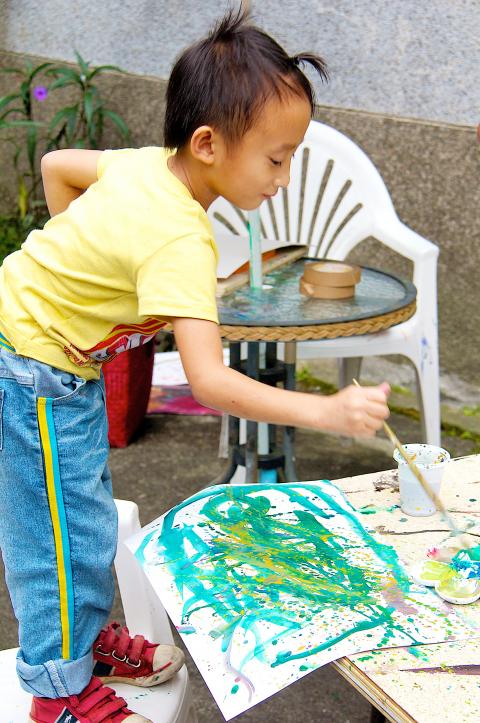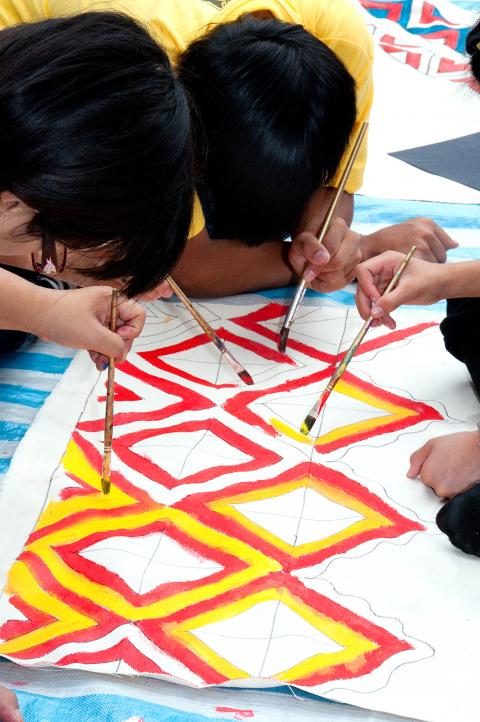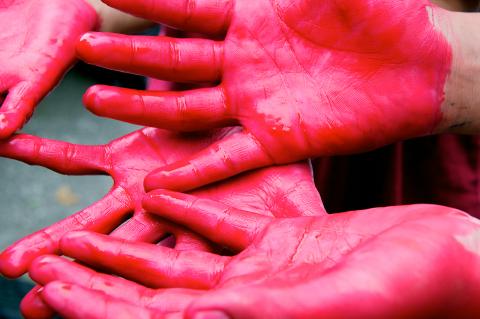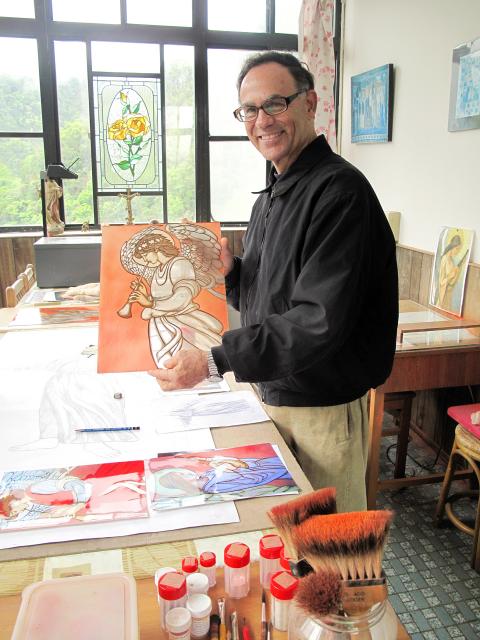The village of Cingcyuan (清泉, clear springs), located in the mist-shrouded hills of Wufeng (五峰) Township in Hsinchu County, clings precariously to steep slopes on both sides of a verdant valley, through which a sparkling river noisily tumbles on its way to the plains far below.
Here live a small group of Aborigines of the Atayal people, as they have done for centuries, and who are known for their hunting prowess. These skills, like much of their rich culture, have largely been lost under the oppressive rule of different colonizers and the indifference of successive governments, which has left them poverty-stricken.
Although a greater sense of their cultural identity has been restored to the people of Cingcyuan in the past three decades through the efforts of churches, volunteers, schools and some government workers, it is clear to the first-time visitor that this village, like so many others in Aboriginal areas, has been neglected by the authorities and that its inhabitants have few opportunities to earn a decent living, develop their talents and work to secure a future.

Photo courtesy of Nick Kembel
It is against this backdrop that the Wufong Project (五峰計畫進展史) was born. Aptly subtitled Restoring Hope, the community project is the brainchild of its founder Malinda Schultz. Her collaboration with Father Barry Martinson, a Jesuit priest and 37-year resident of Cingcyuan, has resulted in a new community activity center, standing where a derelict building that used to house a long-defunct credit cooperative once sagged.
Their ongoing efforts to help the children of the village, and indirectly the community, are an example of what can be achieved when people work hard to help others, instead of waiting for government authorities to act and serve the people.
Schultz said on a recent visit to the village that she discovered the beauty of the area and its people on a chance visit a few years ago. A performance by an Atayal children’s choir struck a chord deep within her and she became inspired to act to help improve the lot of the populace.

Photo courtesy of Johnathan Burke
Her first aim was to help the children there, as they had little education and some had drifted into drug and alcohol abuse, while the poverty-stricken, isolated village offered them little opportunity to succeed.
The goal, Schultz said, was to boost the children’s confidence by showing them that they can achieve something through hard work. This she proposed to do by teaching them art and developing their creativity.
Schultz approached Father Barry, who as resident priest at the Catholic Church has for years played a leading role in the community and has worked extensively with the youth.

Photo courtesy of Nick Kembel
They agreed to start raising funds to build a community center as a safe gathering and learning place.
Schultz proceeded to gather a group of volunteer artists, writers and photographers to guide the children through three art workshops. Here the children learnt to take photographs and create artworks, which were sold at a massively successful auction in October 2011. Through the auction and a large donation by a wealthy family who were inspired by the project, they raised the NT$2.1 million needed to start construction of the center.
“The most wonderful thing was the expression on the children’s faces when they saw the amount of money bidders were paying for their artwork,” Schultz said.

Photo courtesy of Carina Koen
“A very deep thing has been planted with this project. These children now realize that they have a leadership role to play in their community. They have been energized by the success of the project,” she said
At this stage the project came close to getting derailed, as the unused, derelict credit cooperative building where they had started the building process was, unbeknownst to them, on land belonging to the local government.
The authorities tried to stop construction because the defunct credit cooperative was deeply in debt, among other things. However, Father Barry, who is an accomplished artist in his own right, forged ahead and sold many of his personal paintings and his stained-glass, at auction — a process he said was at times deeply emotional, but also spiritual.
Through his efforts Father Barry managed to raise enough funds to pay off the credit cooperative’s debt and secure the land for the center.
“It was a miracle,” he says.
The center was inaugurated in late November last year and now provides a safe space where the children of Cingcyuan can learn about their heritage.
Resident Atayal teacher Laling instructs the children on different aspects of their culture, including teaching them the traditional art of hunting and traditional Atayal songs, as well as the Atayal language.
“We need more volunteers to help teach our children. Anybody who can lend a hand is welcome,” Laling says, as he hurriedly disappears into the center with three of his charges in tow, ready to present an Atayal vocabulary lesson to an eager and appreciative audience.
For more information on the project, including volunteering opportunities, please visit the Wufong Project Web site at: thewufongproject.wordpress.com.

Seven hundred job applications. One interview. Marco Mascaro arrived in Taiwan last year with a PhD in engineering physics and years of experience at a European research center. He thought his Gold Card would guarantee him a foothold in Taiwan’s job market. “It’s marketed as if Taiwan really needs you,” the 33-year-old Italian says. “The reality is that companies here don’t really need us.” The Employment Gold Card was designed to fix Taiwan’s labor shortage by offering foreign professionals a combined resident visa and open work permit valid for three years. But for many, like Mascaro, the welcome mat ends at the door. A

Last week gave us the droll little comedy of People’s Republic of China’s (PRC) consul general in Osaka posting a threat on X in response to Japanese Prime Minister Sanae Takaichi saying to the Diet that a Chinese attack on Taiwan may be an “existential threat” to Japan. That would allow Japanese Self Defence Forces to respond militarily. The PRC representative then said that if a “filthy neck sticks itself in uninvited, we will cut it off without a moment’s hesitation. Are you prepared for that?” This was widely, and probably deliberately, construed as a threat to behead Takaichi, though it

If China attacks, will Taiwanese be willing to fight? Analysts of certain types obsess over questions like this, especially military analysts and those with an ax to grind as to whether Taiwan is worth defending, or should be cut loose to appease Beijing. Fellow columnist Michael Turton in “Notes from Central Taiwan: Willing to fight for the homeland” (Nov. 6, page 12) provides a superb analysis of this topic, how it is used and manipulated to political ends and what the underlying data shows. The problem is that most analysis is centered around polling data, which as Turton observes, “many of these

Since Cheng Li-wun (鄭麗文) was elected Chinese Nationalist Party (KMT) chair on Oct. 18, she has become a polarizing figure. Her supporters see her as a firebrand critic of the ruling Democratic Progressive Party (DPP), while others, including some in her own party, have charged that she is Chinese President Xi Jinping’s (習近平) preferred candidate and that her election was possibly supported by the Chinese Communist Party’s (CPP) unit for political warfare and international influence, the “united front.” Indeed, Xi quickly congratulated Cheng upon her election. The 55-year-old former lawmaker and ex-talk show host, who was sworn in on Nov.